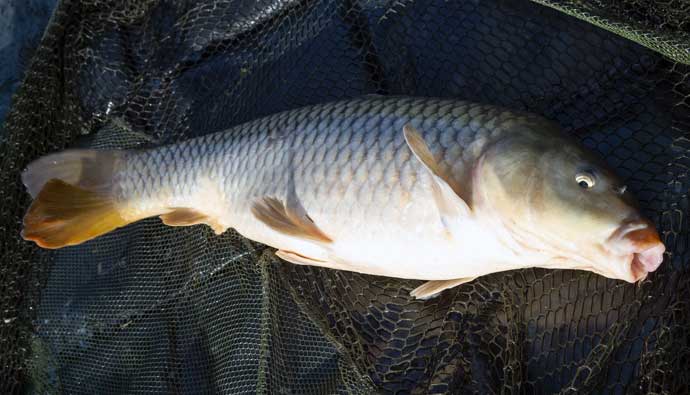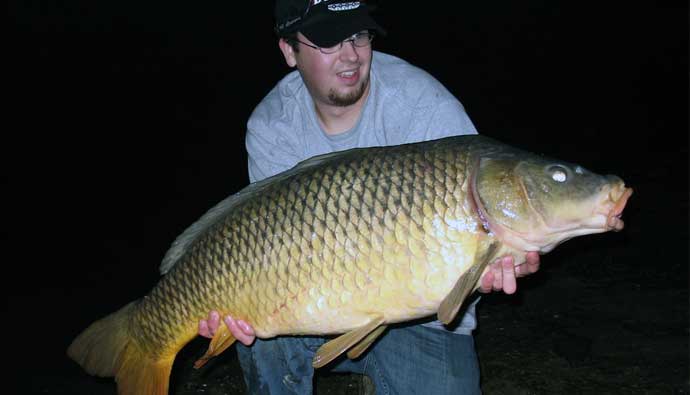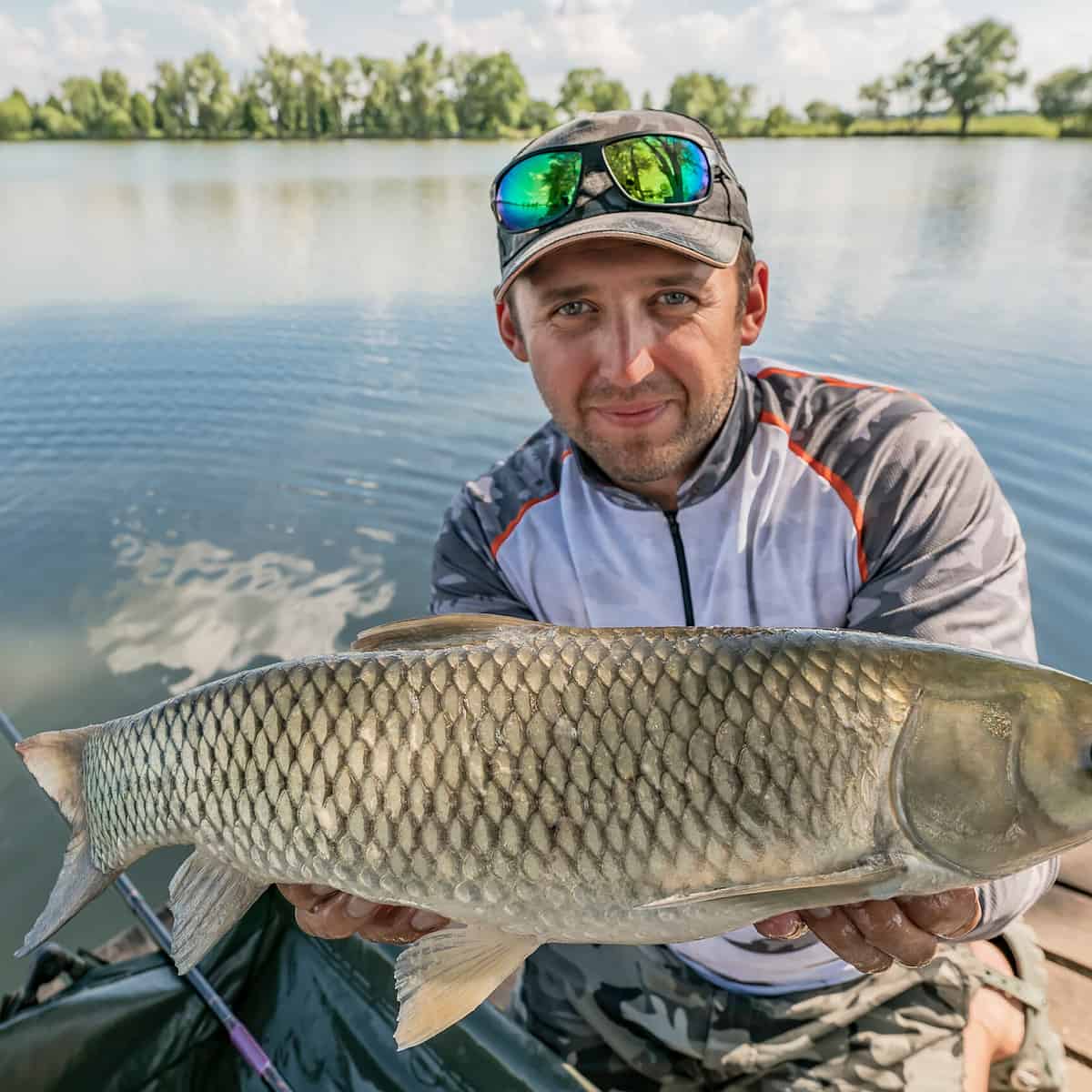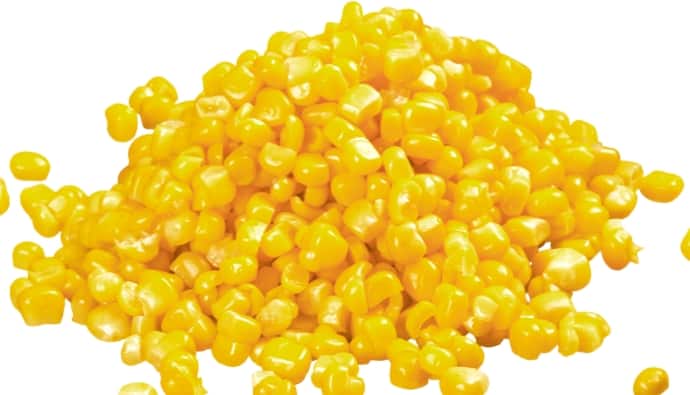Carp fishing is the rage in many parts of the world. While I was fishing in Bangkok, I met a man who was a huge carp fisherman based in the UK. He told me how serious carp fishing is over there…
I was shocked!

Over here in the States, we look at carp as a “trash fish” because they tend to be invasive and wreak havoc to other species.
Lately, however, in LA, there has been a resurgence of carp fishing, which has me super excited to put this guide together for you.
This guide will be your go-to resource for catching this gorgeous and shrewd fish. This stunning fish is native to Asia but it has also been introduced to North America and Europe as well.
Now let’s go catch some giant carp!
Recommended Carp Fishing Gear:
- Carp Fishing Rod: Ugly Stik GX2
- Carp Fishing Reel: KastKing Megatron Spinning Reel
Overview
The common carp is a large-scaled fish that has two distinct barbells on each side of its upper jaw. Standard ones have golden scales that cover their entire length and it has a long, elongated, and thick body.
Carp are omnivorous which means they eat both animals and plants.
This includes:
- aquatic insects
- beetles
- crawfish
- freshwater clams
- live minnows
- grass
- cottonwood seeds
- cattails
The list is by no means exhaustive since carp eat almost anything it can find.
The giant carp fish can grow to large sizes if it has enough space and nutrients but the domesticated variety is the biggest carp you can find.
Carp Facts
| Scientific Name | Cyprinus carpio |
| Common Name(s) | Carp, Common Carp |
| Family | Cyprinidae |
| Identifying Characteristics | The carp is a large-scaled fish that has two distinct barbells on each side of its upper jaw. Standard ones have golden scales that cover their entire length and it has a long, elongated, and thick body. |
| Depth Range | Depends on the weather. Can be found near the surface in summer and near the bottom during winter. |
| Habitat | It is native to Asia but it has also been introduced to North America and Europe as well. |
| Limits | Check your local regulations |
Carp Habitat
Carp are some of the most resilient fish out there, which means that the fish can live about anywhere. This includes brackish water in estuaries but it usually prefers larger lakes, rivers, and reservoirs. Look for carp in slow-moving water. You can also find carp in canals, park ponds, and even ditches.
Yet, if you are fishing from a kayak, look for the fish near the shoreline. That part is warmer compared to the rest of the lake or the main flow of a river.
Plus, you will rarely find carp in clear water and if you do chances are they will be spooked. Also look for the fish in cattails, weeds, and grass where it likes to hide while it is hunting.
How to Catch Carp

Unless you are carp fishing for giant carp, you can use a graphite rod that can withstand a 3 lb test. If you are fishing for the larger variety, use a 7 to 12-foot long rod that will give you enough flex to reel in the powerful fish.
Plus, make sure that the line is strong enough such as a braided line or monofilament. A nylon monofilament line has near neutral buoyancy and can stretch enough to absorb the shock of a large carp.
Chumming for fish is a large part of carp fishing because the bait is too small for a large carp to even notice. Chumming also calms down spooked fish, which is a great added advantage. The slurry attracts large schools that can get aggressive when feeding thus making them easier to hook. You can also use bottom bait or pop-ups to catch bottom-dwelling carp.
Carp Fishing Tactics
- Electronic bite alarms will alert you when a carp has taken the bait. The sensor detects line movement and will alert you with a ‘beep’ when you get a bite.
- If you are carp fishing in the middle of a water column during winter, use zig rigs. These are popup rigs that are on a long leader which floats from the bottom up to the desired depth.
- You can also make your own boilies to put on your hook to catch carp. Most carp anglers have their own secret recipe that they swear by.

Carp Fishing Tips
- Use a rod holder so that you can hold the line still. Carp spook and if you hold the rod in your hand there will always be some movement that will scare them away. Look for them in weed beds during this time.
- If the hook is stuck deep in the fish’s mouth use a pair of hemostats to remove it rather than using your hands.
How to Catch Carp in All Four Season
Springtime is considered to be the best time for carp fishing because that’s when the water temperatures start to rise and compel the fish to hunt. During the summer, the fish will swim towards windward banks but they are hard to find in winter.
The main priority of the fish is temperature and it will try to seek out warmer areas preferably those that receive direct sunlight. But, if you want a large haul, fish for the carp at the start of autumn. This is the time when the fish goes on a feeding frenzy to survive the colder season.
How to Clean Carp

- Use a sharp knife and remove the scales by pressing firmly at the head. Press and continue to apply pressure all the way to the tail until you have removed all the scales.
- Rinse the carp and use a SHARP knife to cut behind the gills.
- Slice along the backbone and ribs and then lift the fish and slice towards the tail. Repeat on the other side.
- Cut along the width of one end of the fillet and carve with some pressure toward the cutting board in long strokes. Hold the skin back with your other hand as you cut. Remove the mud vein by making a V cut on each side of the lateral line and remove the meat and the vein along with it.
How to Cook Carp
Carp Recipe
- Heat the oven to 350°F
- Butter a large baking dish and place the fillets inside.
- Cover the fillets with lemon slices to keep the fish moist and flavorful before popping the dish in the oven for 45 minutes.
Frequently Asked Questions
Q: Why shouldn’t I use large hooks to catch carp?
A: Carp are notorious for being bite shy. Most will nibble at bait before taking it in their whole mouth if it proves irresistible so using bigger hooks is not a good idea. The fish can taste, see and smell a large hook and won’t bite at all so use smaller barbed hooks instead (if they are legal where you are fishing).
Q: What lures to use for carp?
A: Use small plastic grubs to entice carp especially if you are fishing in the shallows.
Q: How quickly do carp grow?
A: Carp can grow to weigh about 33 pounds in 5 to 6 years.
Insider Advice
Whether you are fishing for giant carp fish or smaller ones, the tips and tactics will work for you when you are out on the water. Make sure that you have someone else with you who can support you if you are planning to hook a big one.
Giant carp can be quite aggressive and may pull you in if you’re not careful.
If you have any strategies that worked for you while carp fishing, please share them in the comments below.




 Facebook
Facebook YouTube
YouTube








